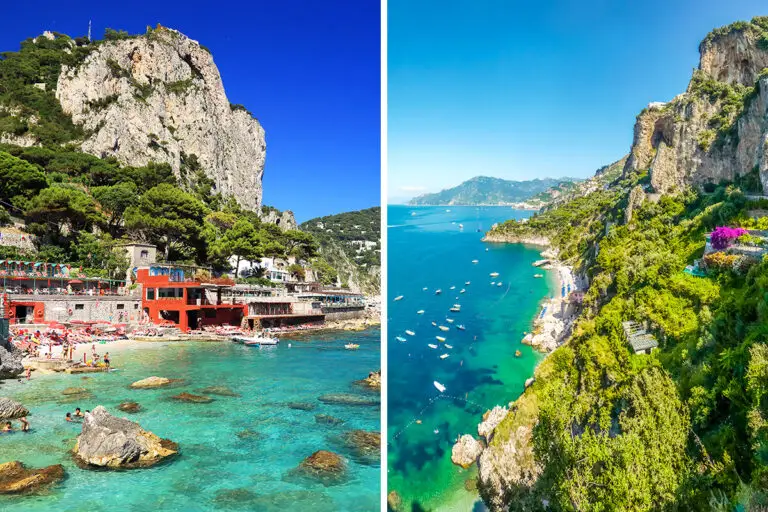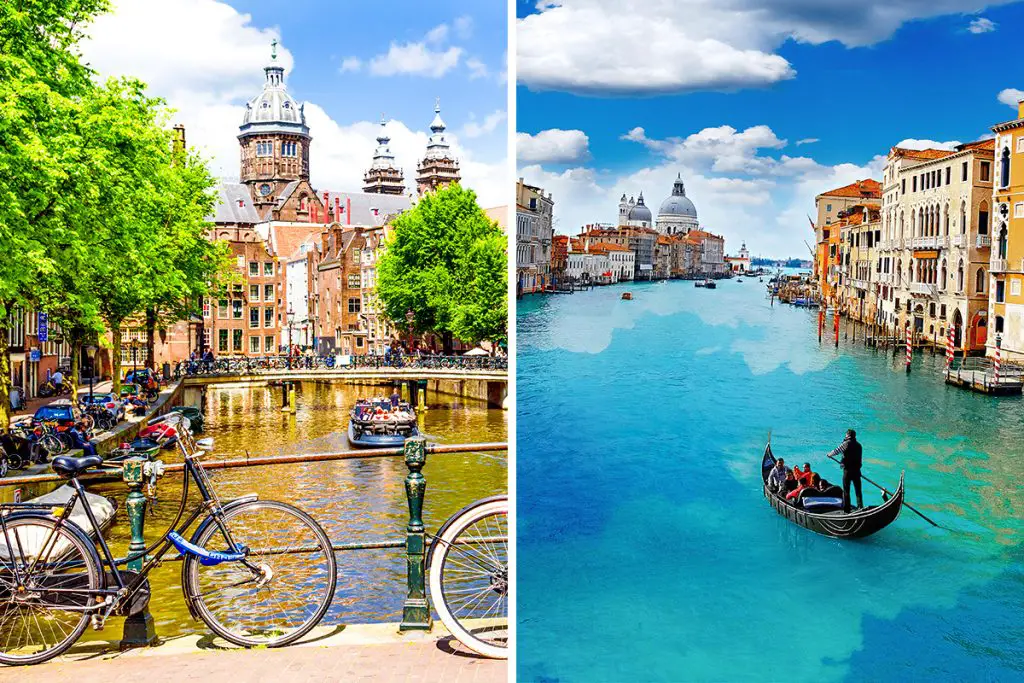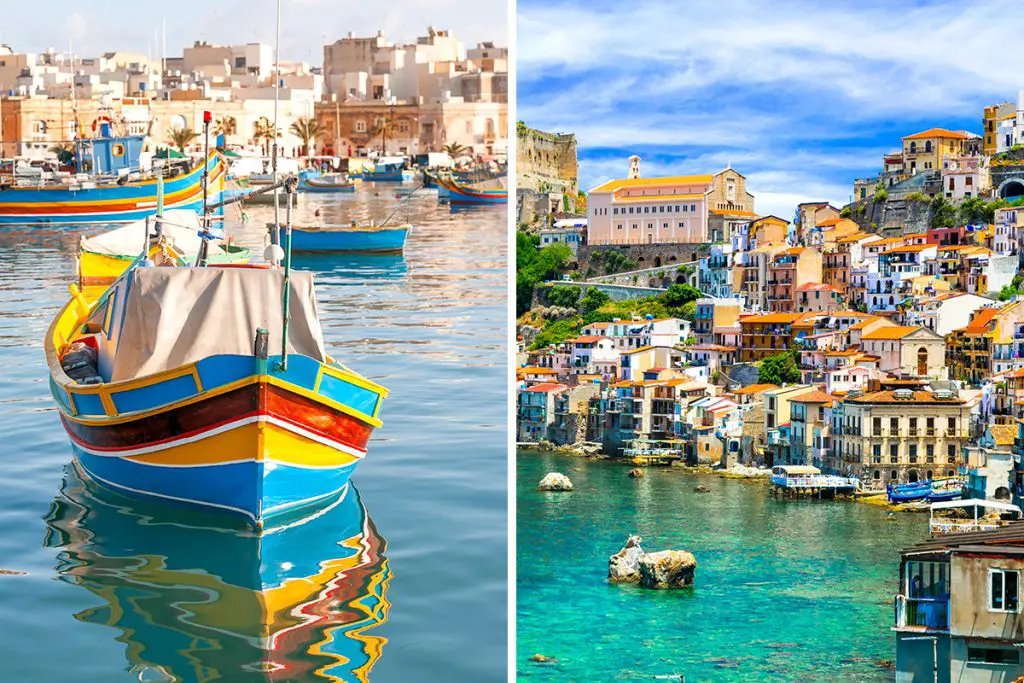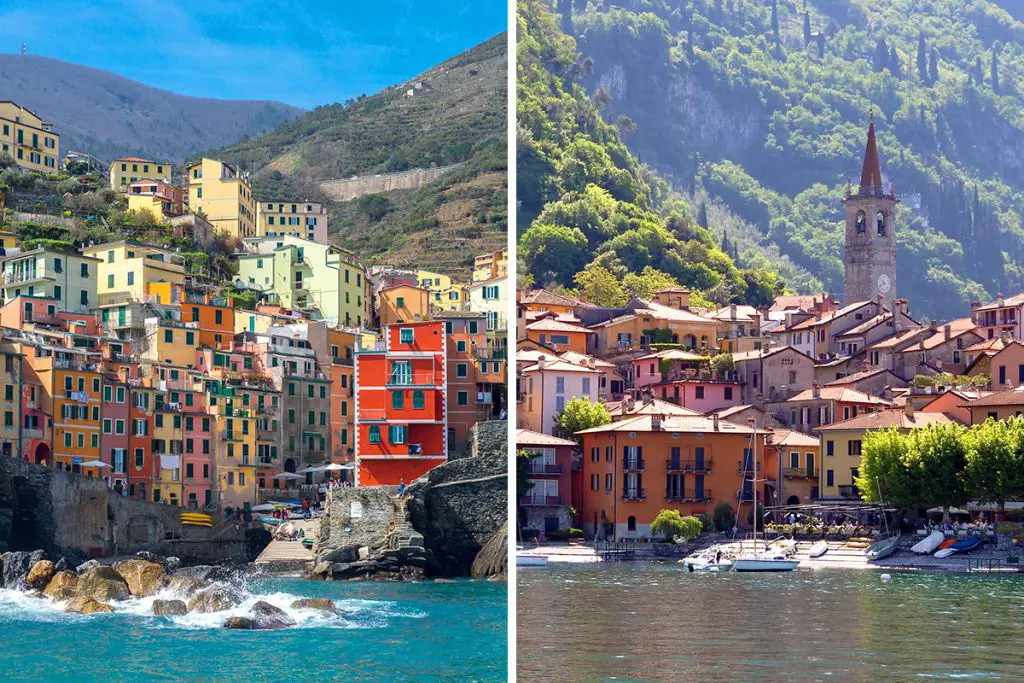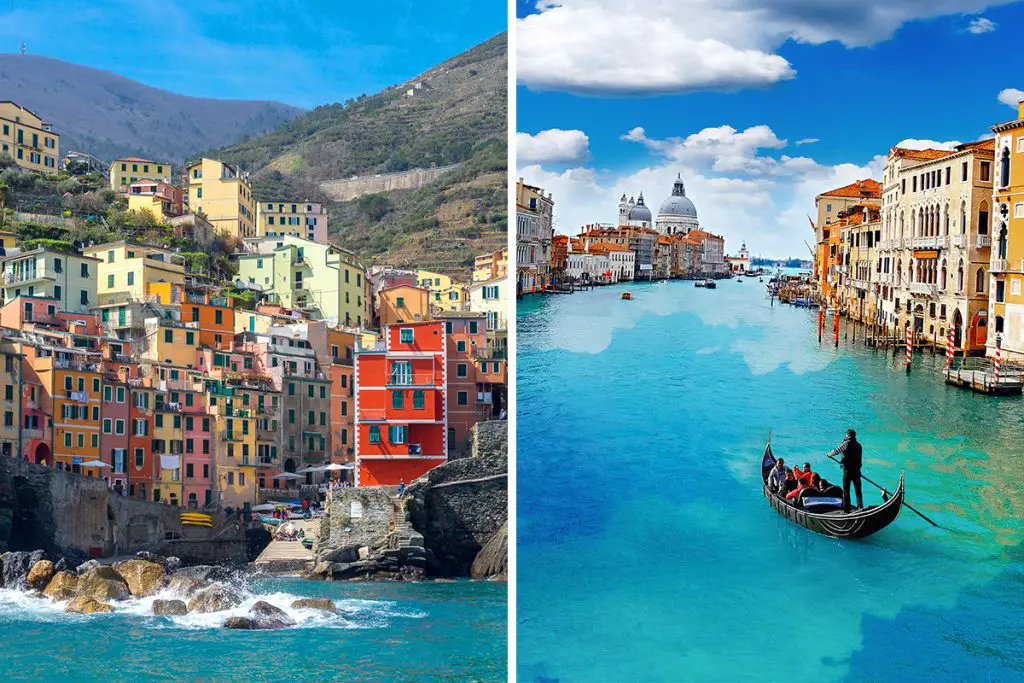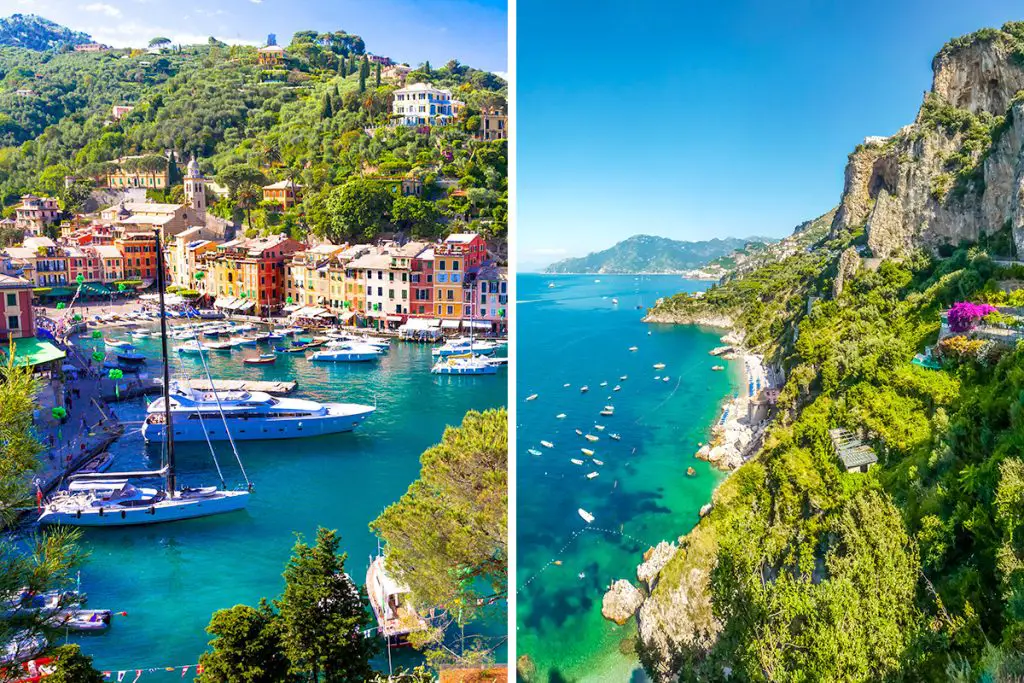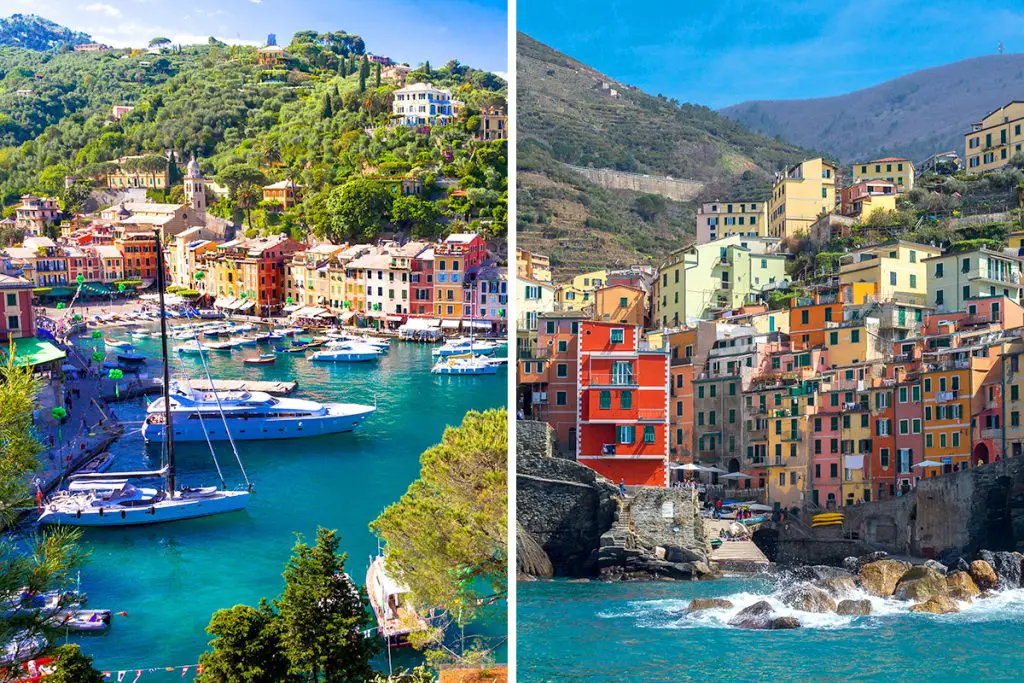Capri is a small, idyllic island with a big and enduring reputation as a beach paradise. In the distant past, it charmed Emperor Tiberius so much that he made the island his home. And during his reign, he transformed the island’s landscape, which started Capri’s image as a tourist hotspot.
Nearby is the Amalfi Coast, a world-famous coastline that needs little introduction. Its picturesque towns perched on high cliffs are its most iconic sights. But the coast is more than just a wondrous eye candy as it offers more allures to keep you coming back for more.
You can’t go wrong with either, as they have similar draws. But from your expenses to each destination’s attractions, there are a few things to consider before choosing between the two.
Capri
The wondrous island of Capri offers a tempting slice of La Dolce Vita. From its famous cliffside views, sparkling waters, and flower-clad buildings, it doesn’t fail to take your breath away.
But while Capri’s beauty urges you to come, it’s the island’s other allures that make you want to stay. It has tons of hidden gems to discover, endless outdoor fun, hearty cuisine, and an exciting shopping scene. With all these and more, Capri is rightfully among Italy’s sought-after destinations.
What Makes Capri Unique?
Dazzling Natural Beauty
Though small, Capri remains to be among Italy’s most desirable towns. This enchanting island rightfully deserves this for its dramatic views alone. With an intoxicating mix of azure waters, towering cliffs, and luscious greenery around, it never fails to dazzle its tourists.
But Capri needs an adventurous tourist to uncover its hidden gems though. And the best way to begin your scenic journey is to travel by foot!
The most breathtaking panoramic path on the island is the Via del Pizzolungo. It not only gives you the cliffside views that Capri’s famous for. But from here, you can also get a glimpse or visit the island’s natural attractions.
Via del Pizzolungo extends as far as the famous Natural Arch to the wondrous Faraglioni. So this walk is an obligatory stop, as it gives you an overview of what dazzling sights you can explore.
Start your trail from the Natural Arch, where you can hang out a bit to explore the site. In the distant past, this used to make up the roof of a grotto. But after years of erosion, it collapsed, forming an arch that sits by the sparkling waters off the coast.
Not far from the Natural Arch on the same path lies the Grotta di Matermania. You may have to look a bit close as this is well-hidden deep into the cliffside. This cave used to be a shrine during the time of ancient Rome, but it’s now a stunning marvel for you to wander in.
Walk to the other end by taking Via Tragara and you’ll reach the Faraglioni viewpoint. This is one of Capri’s most famous sights. And while some are okay with viewing it from afar, others want to get up close and personal with it.
You can always venture off the shore with a boat tour to get the best views of Capri. Other than the Faraglioni, you can also wander through grottos on a boat. While the Green Grotto and White Grotto are breathtaking, none can top the famous Blue Grotto.
The Blue Grotto is the most magical sight in Capri, heavily immortalized in literature. It’s a top destination for its crystal clear turquoise waters that bounce light off the cave walls when the sun hits it.
Discover Its Ancient History
The island of Capri has long had a reputation as an idyllic retreat. Back in the 20th century, it was a popular escape for renowned artists and poets. But Capri made its name way further back in the ancient Roman era.
Capri was such a slice of paradise that it enchanted emperors to make it their getaway spot. Emperor Tiberius was such a big fan that he set up a string of villas on the island and made Capri his home from where he ran the empire.
The villa that started Capri’s big reputation is the Villa Jovis. This posh villa is where Emperor Tiberius lived and remained until his death.
Nothing but a shadow of what it once was, it’s still a well-preserved site. You can still wander through courtrooms and slave quarters to get a piece of Capri’s ancient history. More than that, Villa Jovis offers an astounding seaside view, and you’ll see why Emperor Tiberius picked this spot for his home.
Most tourists combine a trip to Villa Jovis with Villa Lysis, another splendid site. This 20th-century villa was a favorite among intellectual travelers. Poets, writers, and artists flocked here to have a round or two of philosophical banter.
Today, it serves as an exhibition hall and historic attraction. The building itself has an eclectic mix of influences, from Art Nouveau to Greek to Neoclassic styles. It also has a stunning seaside backdrop, with lush, leafy gardens surrounding the area.
Another breathtaking historic landmark in Capri is the Via Krupp. This path is famous for its incredibly winding road that’s paved on the cliffside. It meanders down the cliff like a snake into the harbor of the Marina Piccola.
Via Krupp once served as a path for Friedrich Krupp’s hotel and research vessel, so it was once walkable. But this walk has been closed for years due to the fear of falling rocks from the cliffs.
Still, you can get an astounding view of Via Krupp at Giardini di Augusto. And the view here is arguably better than walking on the path itself!
A Proud Culinary Hotspot
Nestled in the Gulf of Naples, Capri’s culinary scene focuses on fresh seafood and produce. Capri continues its culinary traditions created by the masterful hands of passionate chefs. From the days of Emperor Tiberius on the island, Capri’s standout food scene satisfies the tummies of its foodie visitors.
The island is famous for growing the plumpest tomatoes, the most aromatic basil, and even some of the best olive oils in Italy. Featuring the best products that Capri has to offer are its traditional dishes. Some of which are even named after the island.
A trip to Capri isn’t complete without grabbing a plate of fresh Caprese Salad. This light salad has three stars: milky mozzarella, succulent tomatoes, and fragrant basils. It’s topped with wild oregano and arugula and finished with a drizzle of olive oil.
A tasty variation of this dish is Panini Caprese. It’s basically fresh bread filled with all the ingredients above. Then it’s grilled to perfection until the mozzarella melts.
The most famous dish in Capri is the simple yet delectable Ravioli Capresi. Filling its light pasta are Parmigiano and aged cactiotta cheese along with marjoram. After cooking, these pillowy ravioli get tossed with basil sauce and fresh tomato to pack more flavor.
Being an island though, you’re never too far from a great seafood restaurant in Capri. Fresh fish and seafood are always the stars of the menu. You can eat fish simply by getting them grilled, but you’d want a bite of their tasty local delicacies.
No seafood experience here is complete without a hearty plate of pezzogna all’acqua pazza. Pezzogna is a locally caught fish, fried in garlic. It’s then finished in a sauce full of cherry tomatoes, parsley, and garlic, and then topped with extra virgin olive oil.
A Shopaholic’s Wonderland
Varied, cultured, and exciting, Capri’s shopping scene is a paradise for your retail therapy needs. While it may not be as glamorous as Milan’s, it’s more than enough to indulge the devout shopaholic in you. With offers ranging from haute couture to local crafts, Capri has tons of things to splurge on.
Though there are tons of quaint shops in town, the Via Camerelle is the finest shopping spot on the island. This charming street is jam-packed with high-fashion brands. Name a luxury brand, especially an Italian brand, and Via Camerelle probably has it.
Spoil yourself with Dolce & Gabbana, Versace, Bulgari, and more. And if you need a break, Via Camerelle also has tons of quaint cafes and restaurants.
If these boutiques aren’t in the cards for you, then you can look elsewhere in the city. Capri’s full of local shops for various goods that don’t break the bank.
Marina Piccolo is lined with little stores that are famous for their food offers. Bring home some olive oil, wander through mountains of dry herbs, and grab the fresh catch of the day.
Up the marina are some more shops to discover. But this time, they focus on crafts and fashion goods.
Grab a bottle of artisan perfumes and fragrances. Refresh your wardrobe with locally made and high-quality pieces. Or walk away with custom, handmade sandals made to fit your feet and taste!
Sensational Bright-Blue Beaches
Capri, being a scenic island on the Bay of Naples, is home to charming, idyllic beaches. It’s been a top resort town since ancient Rome, and it remains to be one of Italy’s best summer retreat spots.
Because it’s a volcanic island, don’t expect wide soft-sand beaches here. Instead, you’ll be relaxing on pebbly shores backed by towering cliffs. Still, Capri has crystal clear waters that don’t disappoint.
Among the best beaches on the island is Bagni Di Tiberio, where there are both pebbly and sandy spots. It’s a great beach for sunbathing, swimming, and even for small kids to have fun in.
If it gets too crowded here for your liking, you’ll find no shortage of beaches here for fun. Among the noteworthy ones are Marina Grande, Marina Piccola, and I Faraglioni, where you can swim with views of the rock cliffs.
Amalfi Coast
Italy is full of charming coastal towns and villages. But they all pale in comparison to the world-famous Amalfi Coast. Nestled along the southern coast, facing the Tyrrhenian sea, the coast is among the most desirable spots in the whole country.
Picture winding roads set on plunging cliffs, with vistas overlooking bright blue waters. Think of pastel-hued, bougainvillea-laced houses sitting by the cliffs that slope down to pebbly shores. And Imagine all the magical scenery around you, with an eclectic mix of historical and natural wonders.
Set foot on the coast and you’ll quickly realize why the coast so enchanted the rich and powerful since ancient times. Amalfi Coast has tons up its sleeve to swoon you over.
What Makes Amalfi Coast Unique?
The Iconic Cliffside Landscape
When you think of Amalfi Coast, you imagine charming seaside towns that overlook the pristine blue waters. Amalfi Coast has been a dreamy destination for the upper class since ancient times. And its impeccable beauty is what keeps enchanting people on its coast.
Amalfi Coast is one of the most gorgeous coastlines in the world.
Everywhere on the coast are countless vistas where you can overlook Mediterranean waters. The coast hides a wide variety of natural wonders inland too, such as lush natural reserves and majestic grottos. Amalfi Coast leaves you feeling refreshed and renewed, a perfect slice of paradise for relaxation and adventure.
The Path of the Gods is a great introduction to the coasts’ best sights. This is a long scenic path along the coast that gives you an overview of the beauty that made the Amalfi Coast famous. Get a glimpse of lush scenery and historic towns on various terrains as you get to know the coast’s calmer side.
Some of Amalfi Coast’s most breathtaking views aren’t on the shore though. Boat tours are a staple to every visitor’s itinerary here for a good reason.
Venture off the shore where you’ll get the best 360 views of the towns. From pastel-colored houses on cliffs, pops of emerald greenery, and the white boats bobbing on the shore, you can soak in its beauty all at once on the sea.
Charming, Paradisiacal Towns
Amalfi Coast is home to some of the most picturesque towns in the world. These quaint towns are the likes to grace a dreamy painting. Each with its unique charm and being so close together, Amalfi Coast is a paradise of endless adventure.
Not to mention, these charming towns are also well-connected to one another. So no matter where you stay on the Amalfi Coast, exciting day trips are just at your fingertips. Though trains aren’t an option here, you can always take a bus or travel by sea for a more scenic option.
Positano is the coast’s most fashionable spot, famous for its colorful buildings layered on the cliffside. Nicknamed the “Vertical City” for its steep landscape, it’s also Amalfi Coast’s best nightlife spot.
Nearby Positano is the lesser-known but incredibly breathtaking town of Ravello. Perched on top of mountains, Ravello offers the best vistas on the Amalfi Coast. With no shortage of serene views and being quieter than Positano, it’s the best town for a tranquil stay.
An unmissable town is Amalfi, the biggest one on the Amalfi Coast. It’s often the jumping point of tourists to the coast as it’s among the best-connected towns here. But Amalfi’s a strong tourist spot, too, for its bustling bar and food scene, with tons more to offer.
While these are Amalfi Coast’s best towns, they’re often pricey. Thankfully, the coast also has lesser-known towns that are more affordable and lack the big crowds of tourists.
Towns like Cetara, Minori, and Praiano are quieter yet breathtaking towns. They’re better choices for a laid-back day trip to get away from the hustle and bustle of more popular towns. If you’re avoiding steep paths, Maiori may be more to your liking as it’s among the flattest towns on the coast.
The World-Famous Mediterranean Waters
The Amalfi Coast isn’t the quintessential spot for an Italian summer escapade for nothing. Its rugged coastline, filled with plunging cliffs, leaves little space for wide sandy beaches. But this unique landscape makes the coast one of the most breathtaking spots in Italy.
Amalfi Coast’s beaches aren’t the typical tropical beaches: powdery soft sands and lots of space. Volcanic in origin, Amalfi Coast has pebbly beaches. But they make up for it with its crystal clear azure waters and unique surroundings.
At first glance, you may think that Amalfi Coast is void of beaches. But look closer and you’ll discover secluded bays hidden by soaring cliffs and winding roads. Home to coastal and paradisiacal towns, the coast indulges the avid beach bum in you.
Each town has its main beach that’s easy to get to. With colorful beach umbrellas and sunbeds dotting the shore, they’re great for sunbathing.
But away from the popular beaches of each town, you may stumble upon some hidden gems with unique charms.
Fiordo di Furore is arguably the most Instagrammable beach on the Amalfi Coast. Surrounding the beach are towering cliffs and pastel-colored houses. Nestled between vineyards and lemon groves, you can soak up its splendor with the smell of citrus in the air.
Amalfi Coast’s beaches are notoriously small. But at Maiori Beach, you’ll have tons of space to frolic in. It’s not only the largest beach on the coast, but it’s also among the few that are sandy and not pebbly.
A Treasure Trove of Archaeological Wonders
Being a world-famous coastline with unparalleled views, it’s easy to think of the Amalfi Coast only just as a sun lover’s dream. While that’s the main draw, this reputation often overshadows its rich history.
The Amalfi Coast was under the Roman Empire, a seaside retreat for the upper class. Conquered by various powerful nations over the course of history and then to the empire again, the coast has tons of stories to tell.
During ancient times, these nations erected a whole string of villas, monuments, and other landmarks. In the Middle Ages, monasteries began creating terraces along the cliffside.
All these contributed to the stunning coast that jet-setters know today. And there are still traces of this great past sprinkled around the coast today.
You can find remnants of ancient Roman life in Amalfi, Vietri Sul Mare, Li Galli Islands, Positano, and more.
The town of Ravello is arguably the best spot to indulge your inner history buff. There’s the 12th-century San Giovanni del Toro, with crypts decorated in glorious frescoes. At the heart of the town is the Cathedral of San Pantaleone, which dates back to 1086.
In the town of Minori is an ancient Roman villa, the 1st century AD Villa Romana. And among the ruins on the Amalfi Coast, this one’s the largest. It covers over 2500 square feet (232 square meters) for you to wander in. You’ll find rooms and rooms of archaeological finds here. From paintings to pottery, and even baths.
Otherworldly Natural Wonders
The magnificent Amalfi Coast is best known for its iconic seaside views. But explore inland and venture off the shore, and you’ll find tons more majestic sights to marvel at. Brimming with life under the sea and amid its interesting landscape, Amalfi Coast is a nature lover’s wonderland.
Immerse yourself in nature and go on an exciting escapade at Ferriere Nature Reserve. Start at the main square of Amalfi town and walk up the stairs leading to the church. Here, you’ll see signs that will lead you to this lush green oasis.
Exploring this reserve is a three-hour walk in a dense paradise with a microclimate for exotic plants. Sprinkling the nature reserve are bright orchids, salamanders, and other flora and fauna. Take a closer look and you may see a pinguecula, which is a carnivorous plant usually called butterwort.
Go deeper into the reserve and you’ll hear the rumbling of the waterfalls and hidden springs at Rio Canneto. Lining the waters are thriving lemon trees that give off a pleasant citrus scent on your walk.
This nature reserve is a less-visited spot, so you can enjoy nature without the crowd of busy tourists.
The Emerald Grotto at Conca del Marini is the opposite, as it’s a sought-after tourist attraction on the coast. Nestled between Amalfi town and Praiano, this is one of the world’s rarest natural phenomena.
This sea cave’s filled with fluorescent-like emerald water. And when sunlight hits the water, it reflects around the cave, giving it an ethereal glow. It’s even better to see it in person, and you can do so by taking a guided boat tour there!
A more tranquil retreat is a hidden gem known as Lake Avernus. Sit by the lake and surround yourself with luscious greenery. Nearby are ancient Roman ruins for you to explore to discover the coast’s history.
Off the coast of Positano and Capri is a small chain of islands known as the Sirenuse Islands. The islands of La Rotonda, Gallo Lungo, Isca, La Castelluccia, and Vetara make up this network.
Gallo Lungo is the largest one, and it used to be home to a monastery and a prison. From afar, you can still see the old Aragonese Guard Tower.
You may not see this up close though, as you cannot set foot on any of the islands. But take a boat trip and swim in the surrounding waters. You’ll have amazing scenery as you enjoy a refreshing dip.
Some of the best views of the coast though are underwater. Amalfi Coast is perfect for snorkeling as it’s home to a plethora of crystal clear waters. Some of the best diving spots on the coast are Positano, Li Galli Archipelago, Erchie, and Cala di Furore.
Should I Go to Capri or Amalfi Coast?
Because both destinations are quite similar, there are two major factors to consider when making this decision.
The Amalfi Coast is a better choice if you have a tight budget. A week-long stay here averages around 1981 USD per person. But if you’re heading to Amalfi, you’ll be spending around 2030 USD per head.
This price difference is due to Capri’s more isolated location. The island needs to export some goods from the mainland, and this added cost affects your expenses on your trip.
Not only that, but Capri’s size plays a part in this too. Being smaller, Capri has fewer accommodation options. And because it’s a popular tourist spot, the demand for this is high so prices skyrocket.
Amalfi Coast, being larger, has tons more stays to choose from. And if you don’t mind staying in a lesser-known town, you have even more ways to save money on your trip.
There’s also tons more to see and do on Amalfi Coast as it holds more attractions. Both have historical landmarks, an exciting shopping scene, natural wonders to explore, and more. But because Capri is smaller, you’ll run out of touristy things to do on the island faster there.
FAQ
Is Capri Part of the Amalfi Coast?
The island of Capri often gets included as a part of the Amalfi Coast, but it’s not. Instead, Capri is a part of the Campania region, which Naples is also a part of.
Is Capri Near the Amalfi Coast?
Capri and Amalfi Coast are so close to each other, you can even do a day trip to visit both. There’s only one transportation option though, and that’s to travel by sea. But this gives you a breathtaking view of Italy’s stunning coastline.
Amalfi Coast to Capri Distance
The distance between Amalfi Coast is around 21 miles (33 kilometers).
Capri or Amalfi Coast for One Day?
If you’re eyeing a day trip to Capri or Amalfi Coast, go for Capri instead. Capri is a captivating island with a rich history, a thriving food scene, magnificent natural wonders, and more. The best part is that it’s small enough for you to explore for a day!
Amalfi Coast, although a worthwhile destination, is not enough to explore for a day. It’s bigger, with tons of towns to explore and many more attractions to discover. So you may not get the best that the coast has to offer in just a single day.

